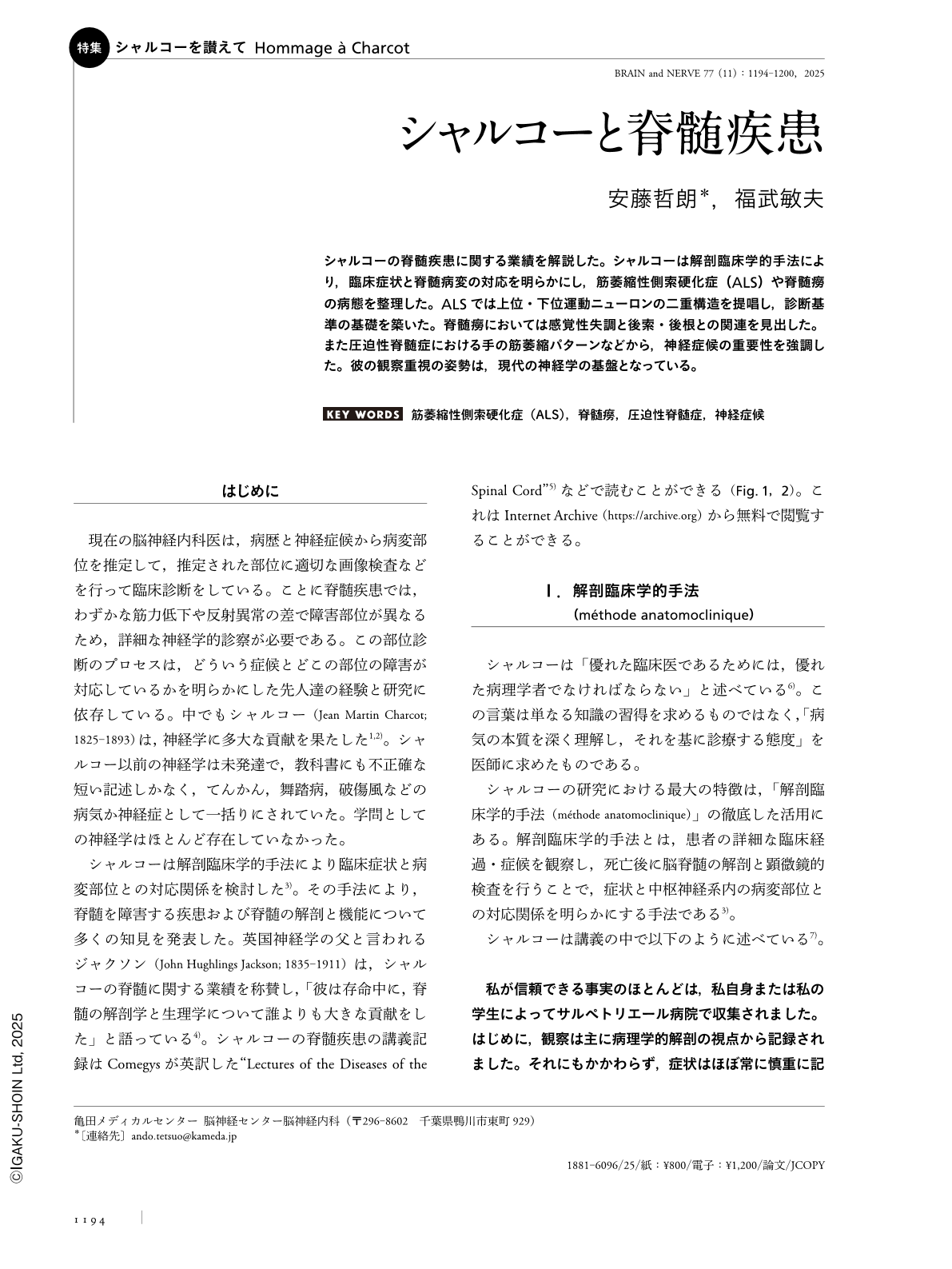Japanese
English
- 有料閲覧
- Abstract 文献概要
- 1ページ目 Look Inside
- 参考文献 Reference
シャルコーの脊髄疾患に関する業績を解説した。シャルコーは解剖臨床学的手法により,臨床症状と脊髄病変の対応を明らかにし,筋萎縮性側索硬化症(ALS)や脊髄癆の病態を整理した。ALSでは上位・下位運動ニューロンの二重構造を提唱し,診断基準の基礎を築いた。脊髄癆においては感覚性失調と後索・後根との関連を見出した。また圧迫性脊髄症における手の筋萎縮パターンなどから,神経症候の重要性を強調した。彼の観察重視の姿勢は,現代の神経学の基盤となっている。
Abstract
This paper outlines the contributions of Jean-Martin Charcot (1825-1893) to the study of spinal cord diseases. Charcot pioneered the anatomoclinical method, which correlated clinical symptoms with pathological findings through detailed observations and autopsies. He elucidated the dual structure of the motor system-gray and white matter-and established the clinical and pathological framework of amyotrophic lateral sclerosis, distinguishing it from other disorders. He also contributed to the understanding of tabes dorsalis by linking sensory ataxia to lesions of the dorsal columns and roots, and identified neurogenic joint disease (Charcot joint). Furthermore, Charcot described compressive myelopathy based solely on clinical signs and postmortem findings, highlighting the importance of symptom distribution, such as hand muscle atrophy, in the differential diagnosis. His legacy continues to influence modern neurology, reinforcing the value of precise clinical observation in the diagnostic process.

Copyright © 2025, Igaku-Shoin Ltd. All rights reserved.


